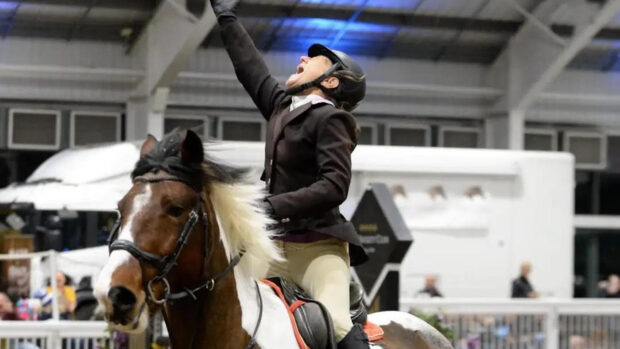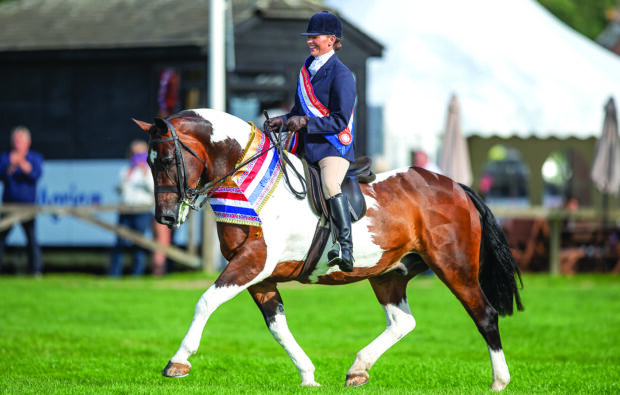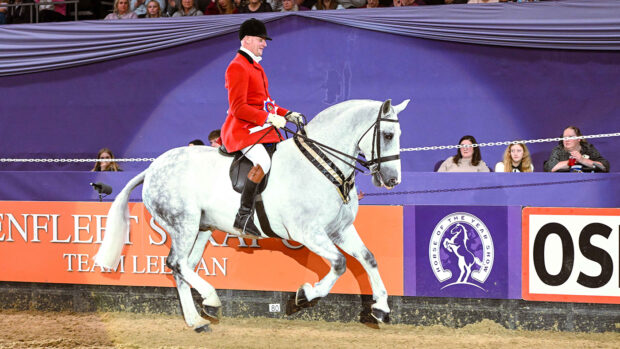H&H’s showing editor Alex Robinson caught up with show horse producer and H&H columnist Simon Reynolds on episode 13 of The Horse & Hound Podcast. Simon is a master at spotting young horses with potential for the show ring – particularly cobs and hunters – and he explained what he looks for when appraising a cob in the raw.
“With a show cob or trying to find any show animal, there is a little bit of luck involved, but the main thing I always look for when looking for a cob to buy is that it’s got to be a cob first and foremost. So you’ve got to have that quality and you’ve also got to have the substance — by which I mean it’s got to have the right limb for the right category.
“Now, where people tend to fall a bit short is that they might get an ugly, small hunter and they think ‘oh, I’ll just take its mane off, because it’s a little bit ugly, and not like a hunter, with not quite as much quality’ — that doesn’t mean it’s a cob.
“A cob’s foreleg is the first thing you look at. It’s got to have a short cannon bone and a nice, short pastern and not a lot of angle in the pastern. The foot is another thing that a lot of people tend to be missing nowadays. When I go and look at a horse, I start from the floor, up — a bit like building a house. A cob has got to have the right foot that matches the bone.
“They always used to say that a show cob should have the head of a lady and the bum of a cook, which is nice to have if you can get one with a pretty head and the right size backside. But I’ve had quite a few cobs that have had what I call handsome heads, where you wouldn’t say they had a pretty head, but you also wouldn’t say they were ugly either.
“At the end of the day, their movement is what defines any show animal, because cobs don’t go around with high kee action — they have low to the ground but ground-covering movement. We get a lot of phone calls and videos and pictures sent to us from people who think they’ve got a cob, but there’s an ocean’s difference between what is actually a show cob and what I would call an ‘agricultural’ cob.
“I don’t mean that in a disrepectful way, but at the end of the day, yes it’s a nice animal, but even down to the hair in its coat which is probably very coarse — I call something like that a ‘clipper’, because you literally have to buy shares in clipper blades, because every fortnight you have to clip them all out because their hair is so coarse and pig-like. But with a quality animal you can give it a hot bath and then you can snap its hair with your finger — that’s a sign of quality.
Article continues below…
You might also be interested in:

The Horse & Hound Podcast: episode 13 – Simon Reynolds | Care at hot horse shows | News round-up

Subscribe to Horse & Hound magazine today – and enjoy unlimited website access all year round
“The other thing is to feel the end of a horse’s dock. When you pull a coarse-haired tail, the dock is very thick — as thick at the bottom as it is at the top. But when you pull the tail of a quality horse and you get to the bottom, the dock has gone thin and whispy, which is a sign of quality.”
If you’d like to hear more from Simon, including what led to his interest in showing, some of his most special horses so far and much more listen here to episode 13 of The Horse & Hound podcast or search “The Horse & Hound Podcast” in your favourite podcast app.
We are continuing to produce Horse & Hound as a weekly magazine during the coronavirus pandemic, as well as to keep our website at horseandhound.co.uk up to date with breaking news, features and more. Click here for info about magazine subscriptions and access to our premium H&H Plus content online.





